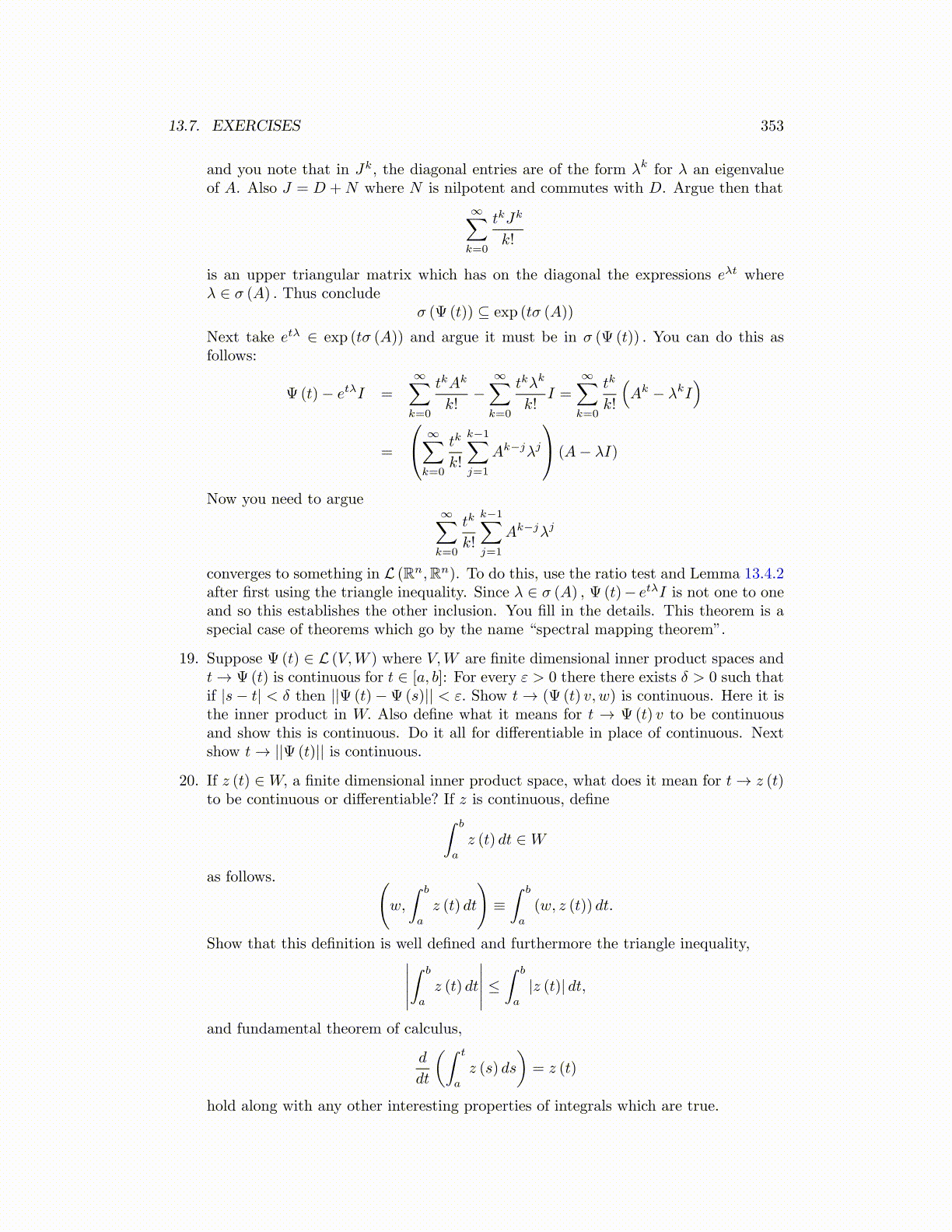
13.7. EXERCISES 353
and you note that in Jk, the diagonal entries are of the form λk for λ an eigenvalueof A. Also J = D +N where N is nilpotent and commutes with D. Argue then that
∞∑k=0
tkJk
k!
is an upper triangular matrix which has on the diagonal the expressions eλt whereλ ∈ σ (A) . Thus conclude
σ (Ψ (t)) ⊆ exp (tσ (A))
Next take etλ ∈ exp (tσ (A)) and argue it must be in σ (Ψ (t)) . You can do this asfollows:
Ψ (t)− etλI =
∞∑k=0
tkAk
k!−
∞∑k=0
tkλk
k!I =
∞∑k=0
tk
k!
(Ak − λkI
)
=
∞∑k=0
tk
k!
k−1∑j=1
Ak−jλj
(A− λI)
Now you need to argue∞∑k=0
tk
k!
k−1∑j=1
Ak−jλj
converges to something in L (Rn,Rn). To do this, use the ratio test and Lemma 13.4.2after first using the triangle inequality. Since λ ∈ σ (A) , Ψ(t)− etλI is not one to oneand so this establishes the other inclusion. You fill in the details. This theorem is aspecial case of theorems which go by the name “spectral mapping theorem”.
19. Suppose Ψ (t) ∈ L (V,W ) where V,W are finite dimensional inner product spaces andt→ Ψ(t) is continuous for t ∈ [a, b]: For every ε > 0 there there exists δ > 0 such thatif |s− t| < δ then ||Ψ(t)−Ψ(s)|| < ε. Show t → (Ψ (t) v, w) is continuous. Here it isthe inner product in W. Also define what it means for t → Ψ(t) v to be continuousand show this is continuous. Do it all for differentiable in place of continuous. Nextshow t→ ||Ψ(t)|| is continuous.
20. If z (t) ∈W, a finite dimensional inner product space, what does it mean for t→ z (t)to be continuous or differentiable? If z is continuous, define∫ b
a
z (t) dt ∈W
as follows. (w,
∫ b
a
z (t) dt
)≡∫ b
a
(w, z (t)) dt.
Show that this definition is well defined and furthermore the triangle inequality,∣∣∣∣∣∫ b
a
z (t) dt
∣∣∣∣∣ ≤∫ b
a
|z (t)| dt,
and fundamental theorem of calculus,
d
dt
(∫ t
a
z (s) ds
)= z (t)
hold along with any other interesting properties of integrals which are true.